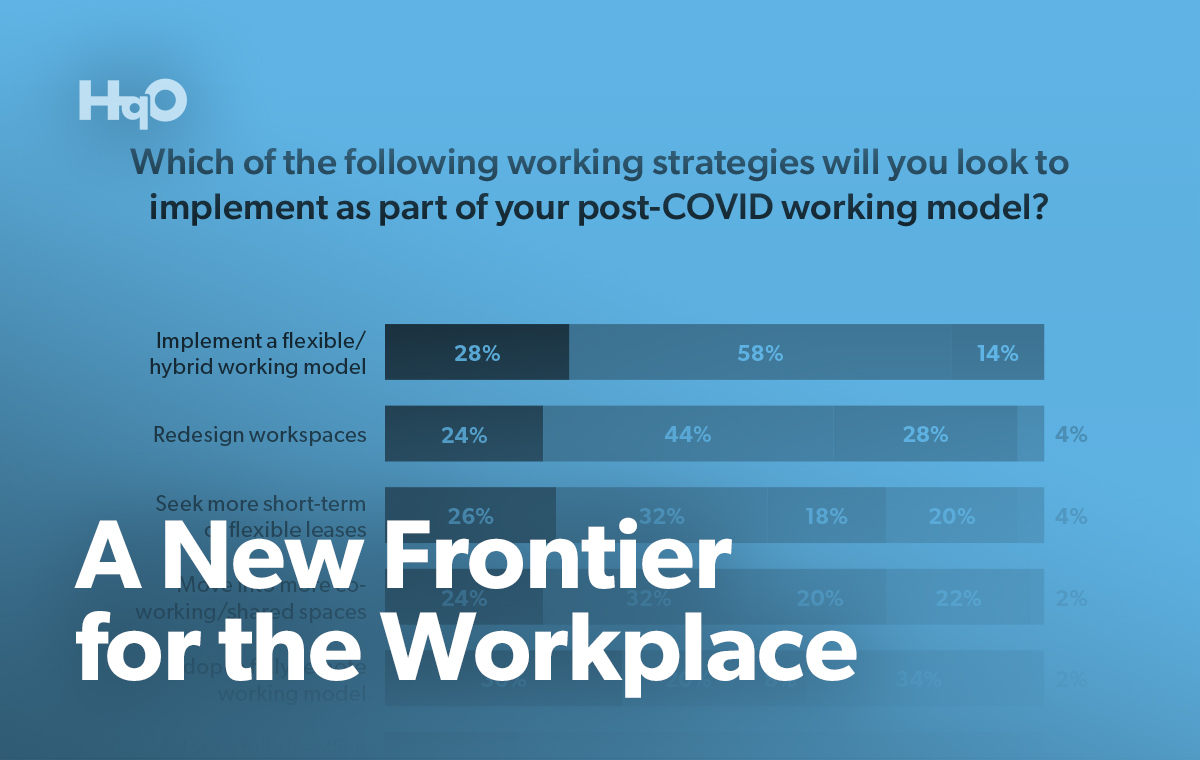The more the workforce changes, the more companies have to adapt.
Work models and environments look very different now than they did in late 2019, when the COVID-19 pandemic instilled mass uncertainty in commercial real estate (CRE) markets across the globe. Since then, decision makers in charge of real estate investments have been in a state of constant flux, trying to determine the best ways to ensure employee safety while also keeping their businesses afloat.
Initially, there was a mass shift towards full-time remote work. Some of the first companies to make this move were large technology companies like Google and Apple. However, as time progressed and the pros and cons of fully remote work became more realized — especially to organizations who were not well-positioned to make this transition —- many of the same companies expressed a need to leverage physical office space again. Currently, the industry is embracing strategies that involve bringing workplace hospitality, flexibility, and hybrid models to employees; this still gives individuals choice over how and where they want to work, but also optimizes existing (and new) real estate investments and leases.
In part, these emerging strategies are also due to the Great Resignation. Now that the workforce has grown accustomed to a more modern way of working, there is no turning back for companies who strive to remain competitive. If they don’t adjust their offerings, they risk being unable to attract and retain talent. These combined happenings have resulted in a collective focus on the overall workplace experience, and the role that physical office space plays in that experience.
Hybrid Takes Center Stage
We can understand where companies stand now, in early 2022, by turning to the data. Out of the employers we polled, 34% have already downsized their real estate portfolio, and an additional 42% plan to downsize in the next two years. However, this does not mean all is bleak for physical office space.
Because of their intent to downsize, employers also expressed a desire to view and manage their existing spaces to match employee needs and in more modern and efficient ways. In fact, 86% of employers have already implemented a flexible/hybrid working model since the beginning of the pandemic, with the remaining 14% planning to implement in the next two years. Similarly, 68% of employers have redesigned their workspaces to support employee needs, while 28% plan to implement redesigned spaces in the next two years.
Said in another way, there is currently more than double the focus on both flexible/hybrid working models and redesigning office space than there was before the COVID-19 pandemic.
Establishing Office Value
In the same way employers are investing more time and money into physical office spaces, employees are also predominantly back to using these spaces.
48% of employers indicate that most or all of their employees are already back in the office, and an additional 40% indicate that some or few employees have returned back to the office.
At the same time, specific strategies are being implemented to establish value in the office and attract and retain employees. During our interviews with employers, two key themes arose: enhanced employee engagement efforts and improved employee benefits.
Survey highlights for employee engagement strategies — which are often led by dedicated Workplace Experience Manager roles — include:
- “We are organizing different activities and creating an entertaining working atmosphere to create less stress among our employees.”
- “We are creating a digital workplace that makes employees productive. It’s a key success factor to any business.”
- “We organize different kinds of events and programs such as health awareness events with free lunch, talk shows where we invite our employees to come and discuss certain topics, and more.”
Likewise, popular employee benefits strategies include:
- “We are taking care of the medical expenses of our employees.”
- “We are offering competitive benefits and bonuses, and have revised our leave policy.”
- “We implemented a cafeteria service to offer a free lunch program.”
These engagement strategies contribute to the individual employee experience, but are also part of the overall workplace experience. Workplace experience goes beyond employee experience to enable employees to control their experience wherever they work. When enhanced, it has the power to connect employees with each other, the company they work for, and the workplace, wherever it may be. Success in these types of experiences ultimately foster increased productivity, creativity, and satisfaction.
Want to discover even more office insights? Download the full report here.



